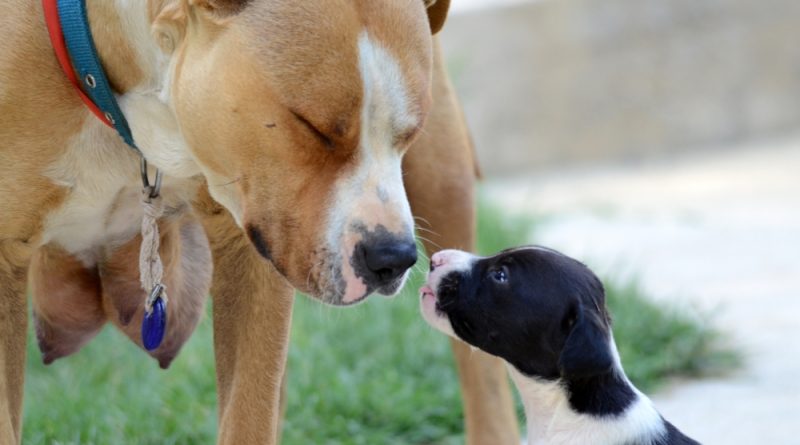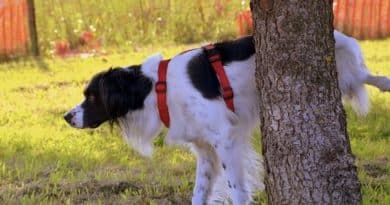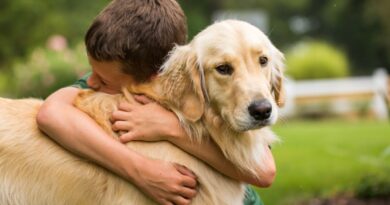Birth of a dog and care for the mon
Experiencing the birth of any living being is incredible; this image is unforgettable, especially when it’s your dog that facilitates this event. It’s important to be prepared to assist her the first time, as there are only 60 days before the “big moment” begins.
But how to handle a dog’s birth? Keep reading the article, where we explain how to assist in your dog’s delivery to learn some basic information on how to proceed in case your dog needs help. If you’re not an expert, read some advice so you can discuss potential concerns with your veterinarian.
Dog Pregnancy
A dog’s pregnancy can last between 60 and 63 days. During this period, you can observe various changes in the dog. It’s crucial to pay attention to these signs to identify if everything is going well. It’s advisable to consult a specialist whenever you notice any abnormalities:
- There’s a change in behavior, less interest in games she used to love, she’s calmer, and sleepier than usual.
- She’ll be more affectionate with the family; however, if a male dog is around, even if it’s the father, she may be more hostile towards him, and in general, they will understand and keep their distance.
- She’ll have a reduced appetite, so it’s essential to monitor the nutritional needs to provide the ideal nutrition during this period.
- Alongside the veterinarian, you should attend regular check-ups to determine how many puppies she’ll have (this can be determined from the 25th day of pregnancy), which will help know during delivery if any are missing.
Dog Birth: Prepare the Ideal Nest
When there are 10 to 15 days left until delivery, the expectant mother will seek a corner in the house, not her usual spots, where she can relax and feel safe with her puppies.
How to prepare a place for the dog to give birth?
The ideal nest can be a box with high edges and lined with cushions to prevent accidents with the puppies or their escape in the first days of life. Remember that they can’t see in the first days, so we must facilitate their stay with the mother as much as possible.
You can also place the mother’s bed and some of her favorite toys in the same place so that she is comfortable with her things.
Signs of Dog Labor
On the day of birth, you’ll notice some pre-delivery symptoms in dogs that will alert you that the puppies are on the way. Some of them are:
- Loss of appetite, total rejection of food.
- The dog may lose milk from her teats.
- She will be uncomfortable anywhere, restless, panting, and may even tremble.
- When lying down to give birth, she might not like the prepared nest. Don’t try to force it, and don’t be alarmed! You’ll have to transfer everything to the final place chosen by her, the one she considers safest for her offspring, and it’s essential to respect her.
These are some of the pre-labor symptoms in dogs, so you need to be quite observant and calm to provide complete assurance to your animal.
Dog Giving Birth: What to Do
We’ve explained everything you need to know, including the answer to the question “How do I know if my dog is in labor?”:
When the time comes, she will lie down on her side, and her breathing will alternate between fast and slow cycles to recover; this is the moment to observe the dog in labor. When the first puppy comes out, the dog will appear to be having a seizure, but then, depending on the breed, the others will be born at intervals of 15 to 30 minutes.
Finally, the moment has come, and you want to know how to assist in the dog’s delivery? It’s essential to be attentive to important actions, knowing what to do during a dog’s birth and how to help.
Dog Giving Birth and Mom Care: Step by Step Birth
Each puppy must be licked by the mother to remove the membranes from the face and stimulate breathing. If this doesn’t happen within 1 to 3 minutes after birth, it should be done by the caregiver. You need to dry them with clean towels, against the fur, to remove fluids from the small airways. You can insert your little finger into the mouth, clean the nose, and they will start breathing on their own.
Usually, the dog will cut the umbilical cord with the help of her teeth. If this doesn’t happen, the owner can do it as follows: with a plastic thread or cotton (nylon thread is recommended), make a knot close to the puppy’s belly (about 1 cm from the navel), then, with nail scissors, cut the umbilical cord towards the placenta, not the puppy, leaving a piece of the umbilical cord and the knot you made on the puppy’s belly, similar to what happens with newborn babies.
The dog may try to eat the placenta, but if you can assist with cleaning, it’s better!
After the puppies are born, avoid touching them, as it’s crucial for them to be with the mother to suckle colostrum, essential in their first 12 hours to boost immunity.
If you want to know how to induce a dog’s labor, we recommend consulting the veterinarian who is monitoring your pet’s pregnancy. Don’t forget that complications or problems during the dog’s birth can occur, so it’s essential to have the contact information of an emergency veterinarian on hand.




